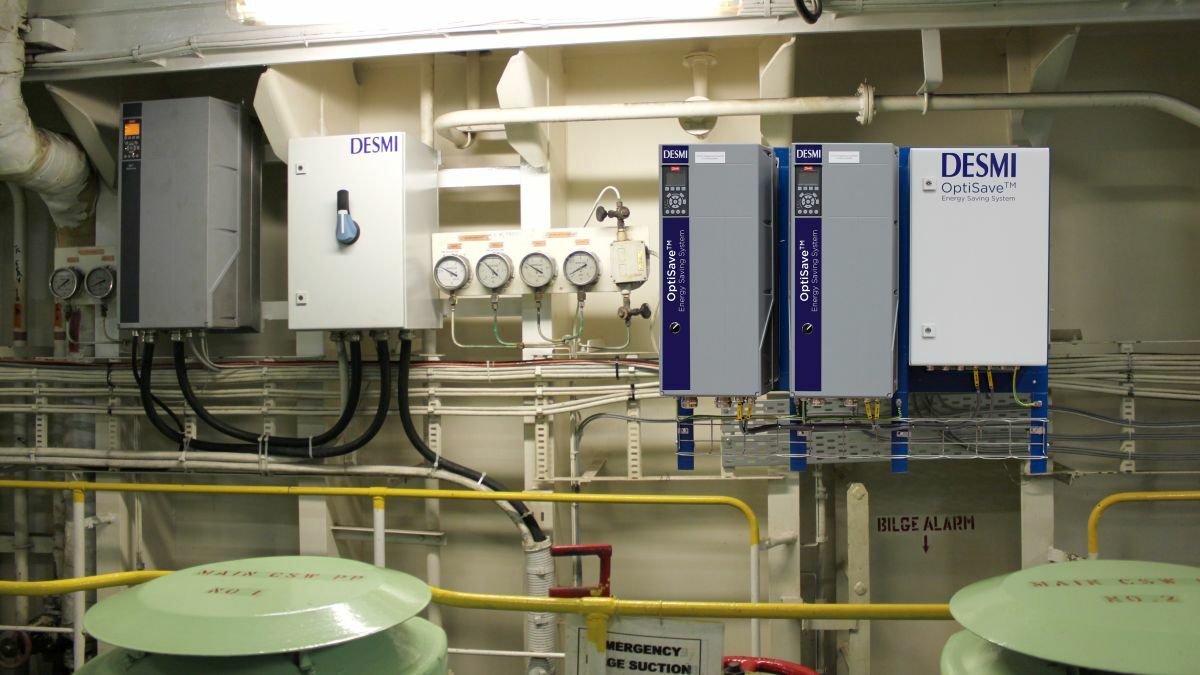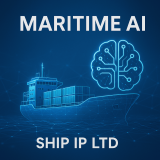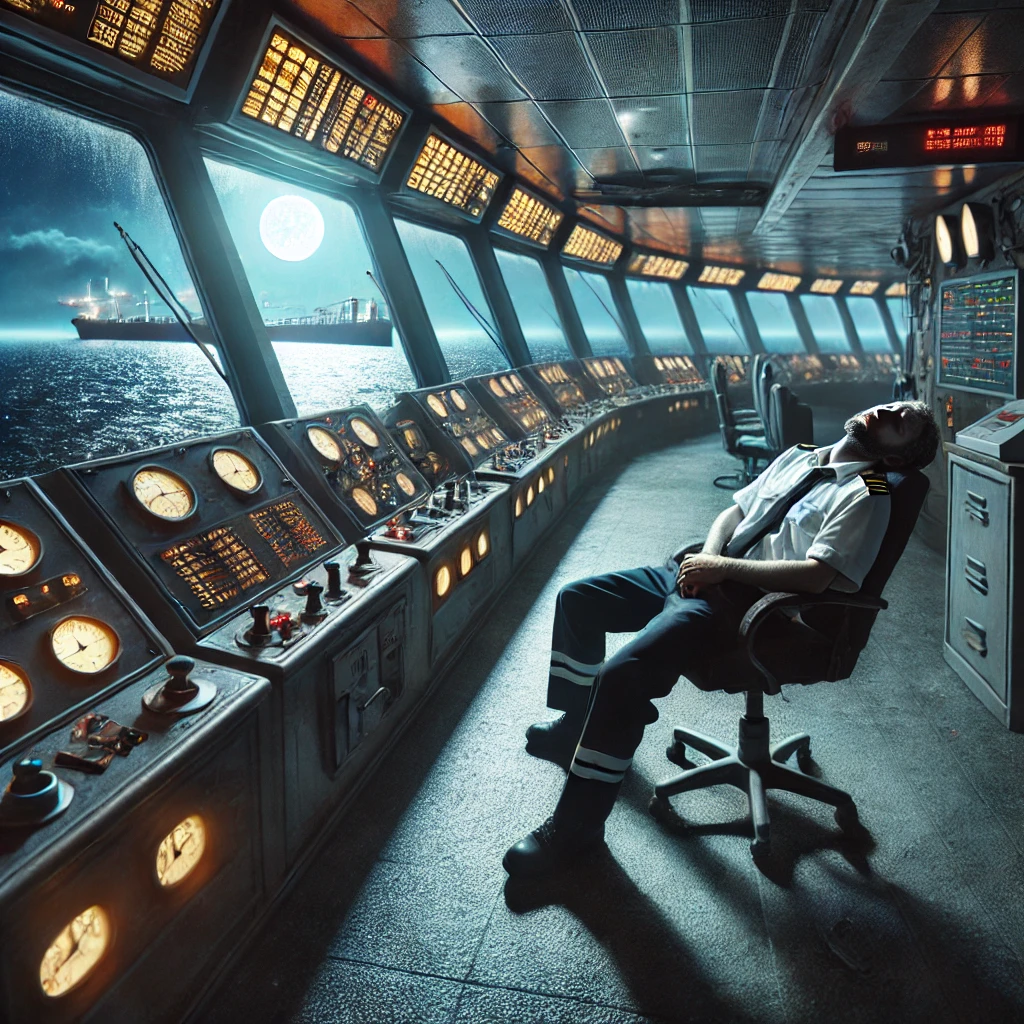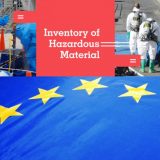October 13, 2020 IMO
The shipping industry has known about the mandated shift to low sulphur fuel for approaching three years, but details remains elusive about the availability and pricing of compliant products.
The International Maritime Organization (IMO) announced in October 2016 that only fuels with a sulphur content below 0.5pc, down from the standard 3.5pc, can be used from 1 January 2020. With global consumption of 3mn bl/d, it is a monumental change and its effects will be felt well beyond bunker fuel markets.
While high sulphur fuel oil (HSFO) can be converted to low sulphur (LSFO), the capacity to meet global demand simply does not exist. The lead time—especially as some were initially unconvinced it would happen on time, if at all—was insufficient to build facilities. To add pressure, a credit trading scheme was not set up to bail out laggards (as the European Union did when it mandated ultra-low sulphur diesel [ULSD] in emission control areas).
This means the industry has three realistic compliance options and the consensus among analysts is that it will adopt each in roughly equal measure: LSFO; marine gasoil (MGO); and retrofitting on-board scrubbers to filter HSFO. Consultancy Channoil suggests that 10pc may cheat, concentrated in areas where supply is almost impossible or policing lax, but compliance will be rigorously enforced after a three-month window.
“The regulation is quite clear,” says Charles Daly, chairman of Channoil. “There will be penalties if you are caught carrying non-compliant fuel oil. No relief will be given unless there is an absolute case that the master could not get compliant fuel or that, by not doing so, he or she would be endangering the ship. Compliance is going to be strongly regulated.”
Each of the three option’s attractiveness will depend on the relative prices that emerge and how they play out over the next few years. Unhelpfully, “no provider has said where compliant fuel oil is going to be priced,” says Daly.
Significant price spreads will open up between high and low sulphur crudes, according to Stuart Dunphy, director of business consulting for northern Europe for software provider AspenTech. “There will be market imbalances—and these will open up opportunities for those refineries in a position to capture them over the next four or five years the imbalances are expected to last.”
Price prediction
Analysis of the forward price curves of HSFO, LSFO and MGO do not yet reflect the scale of the change and may lead some to underestimate problem. The curves remain relatively flat despite “there being widespread concern that there may be insufficient supply to meet demand for LSFO,” says Dunphy.
“We all need to realise that IMO 2020 is real—it will be large and disruptive,” says Rick Joswick, head of oil pricing analytics at consultancy S&P Global Platts. “Some are sceptical about how disruptive this will be. But the only reason prices have not moved is because the change has not yet happened. The price effects will occur once demand changes, at some point before the January cut-off date.”
He estimates that bunker suppliers will buy in October and shippers will buy from November. This translates into HSFO supplies into Singapore, the world’s largest bunker market, falling significantly during September or October. “That is when we should see price effects,” he says. “It is like a tsunami. It is still hidden beyond the horizon—but it is going to hit us.”
There are convincing reasons why the forward curve for distillates has not spiked in the way one may have anticipated. Several attributes from today’s pre-IMO spot market are still informing the curve: the cost to store inventory, the cost of carry, inventory levels and hedging activity. “It functions perfectly for these factors-hedging and incentivising storage/draining of stock—but it is not anywhere near our forecast yet,” says Joswick.
In 2008 there was a huge spike in distillate cracks, caused largely by the Chinese Olympics, of a similar magnitude to those expected to result from IMO 2020. “Every time during that excursion—up and down—the forward curve looked like a series of horizontal lines. It did not predict anything at all. It was useless as a forecast but very useful for indicating inventory levels, as it is intended to do,” he says.
One may have expected substantial hedging against a risk of a big event that will happen in less than six months, but other real-world factors are in play. “Think about it from the perspective of a shipper,” says Joswick. “These are hard times—many have no capital and poor credit. They could choose to do nothing and hope for the best. Or, they could ask the board to borrow money and pre-buy at a price that is higher than today’s, in the belief it will go even higher. That is a tough sell.”
That said, some have evidently started hedging. The spread oLSFO over HSFO was roughly $100/t but a big purchase in a thin market caused this to double. “We believe it will double [again] to nearer $400/t at its peak, in Q1 or Q2 next year,” says Joswick.
Creating compliant fuels
Long-term, it is possible that demand will be met by converting HSFO to LSFO to a common standard. In the meantime, a slew of small and large companies has promised to create compliant fuel from a wide variety of sources and methodologies—which may or may not be compatible with each other.
The major refiners have coitte to supply 0.5pc but only in mega-ports such as Antwerp, Rotterdam and Singapore, and some other important ones such as Marseille. “It is selective,” says Daly. “A ship owner does not want to have 0.5pc sulphur in its tanks and end up in another port and not be able to get it. The new fuel oil could be completely incompatible with other supplies—from what we have seen, they can be very different. You could end up in a similar situation like the one last year, where 150 ships off the American coast ended up stopped at sea with blocked engines.”
Some refiners have reportedly been unwilling to provide details or samples—perhaps because final specification has not been decided but possibly in the hope of locking in customers that will be operating under the fear of being left dead in the water. “Bunker fuel has been commoditised for many years,” says Channoil associate director Mark Waddington. “The majors are trying to turn low sulphur fuel oil into a niche piece of marketing and lock their customers in.”
Daly adds that major oil suppliers have been very slow in giving samples to the IBIA to test compatibility. “The marketing implication is that if a ship owner bought fuel from a major supplier in Antwerp, they would be obliged to buy it from the same supplier in Singapore to guarantee compatibility. This might erode competition and result in ever higher prices. The days when ship owners obtained discounts for surplus HSFO are over.”
While there is a giant pool of HSFO—of consistent quality around the world and a home for which every refinery is seeking—there is not a sufficient pool of low sulphur residuals that have not already found a more profitable home. Bunkering has traditionally been a price-taking activity so producers will not want to invest heavily to create a consistent product. Suppliers need to divert streams from other sources, which could be anything from slurry oils to Indonesian waxy residuals. IMO standards do not ensure compatibility-it governs the sulphur content not the specification-and compatibility testing is tricky and relative, rather than absolute.
“Shippers are scared of incompatibility,” says Joswick. “From their perspective, compatibility is not just a minor economic issue. If the filters become plugged it could leave them adrift on the rocks—just for $50/t saving.” A 0.5pc fuel could be paraffinic, aromatic, a residual blend or take many other forms. “They could look completely different and not be able to be mixed—there could be dangerous compatibility issues,” he adds.
There is no compatibility issue with HSFO because there is such a broad pool of residuals to draw from; refiners do not need to search for obscure sources. As demand for LSFO will at least initially exceed supply, refiners will be motivated to search in fragmented and narrow pools as well as blend-in gasoil.
Marine gasoil
The LSFO supply deficit and compatibility issues will push cautious shippers towards MGO. “There is a really good case here for using marine gas oil,” says Daly. “It is ubiquitous, it is cleaner, it extends engine component life by about 50pc, it carries more calories for the equivalent tonnage and it does not need pre-heating.
“But the big, big advantage is compatibility. It is compatible ubiquitously and there is very little risk of the filter blocking you get with fuel oil. It is also cheaper and easier to clean up in the case of an oil spill.”
Joswick agrees there will be high demand but is “worried about how the refining industry can supply enough middle distillate”. The severity of the price shock will depend on the availability of stocks in October, when demand begins to rise. So far, distillate stocks are not being built onshore as “weekly data is at usual levels or below”, according to Joswick.
The refinery maintenance season has reportedly taken out an unusually high amount of capacity—in part due to tweaks to refineries ahead of IMO—and weak margins have deterred refiners from operating at maximum capacity. “We are looking for 3mn bl/d of [shipping fuel demand by the time we get to Q4]. The highest stockbuild ever achieved in a timeframe [of now until then] was 60m bl, so pulling that down over six months provides only 300,000bl/d [of additional supply],” says Joswick.
Longer term, shippers could benefit from the automotive trend from diesel to electric. “As demand from the transportation sector declines—due to diesel cars being replaced by EVs and hybrids—gasoil is going to become cheaper relative to crude oil, at which point the ship owners will see the benefits of converting to the cleaner diesel fuel,” says Joswick.
High to low sulphur
Converting HSFO to LSFO is another longer-term option. Nothing of scale was built for IMO 2020 only because it takes between four to six years to build something of meaningful scale—which could have meant new capacity opened just as the price spike was receding.
Instead, the industry has been repurposing existing units, such as a Japanese desulphurisation facility that had been used to supply the country’s dwindling LSFO to power business. A refinery in the US Virgin Islands is being restarted for compliant fuel as are smaller, easy-to-use facilities in Fujairah, in Malaysia and Antwerp.
Another untapped source of supply is from US refineries. Refiners that run a mix of high and low sulphur crudes typically dump the residuals in a common tank that is destined for a coker. If the price moves enough, it will be economically attractive for a refiner to segregate the low sulphur residuals and divert it to the bunker market. And, if the price of unwanted HSFO gets low enough, Russia has the capability to burn it for power generation instead of gas.
“The price spreads-low versus high sulphur crude, gasoil versus fuel oil-have to open up enough so that things get redistributed and units get used in different ways,” says Joswick. “It is a stretch, but the world can balance. It requires wide price spreads to enable things that are not currently economic to occur.”
Most refiners will be winners, according to Joswick. Deep conversion refiners will be big winners while simple refineries that only take high sulphur crude and make HSFO will do a bit worse. He says that heavy sweet crude producers (such as Australia, Sudan and West Africa) are seeing values go up. “People are already starting to buy so they have some on hand when it is time to make bunker fuel.”
The value change between sweet and sour crude will “not be earth shattering”, probably around “several dollars per barrel”, he predicts. The differential will not be wide enough to make it economic for crude to be left in the ground—so the residual HSFO will need to find a new home.
“HSFO has got to price itself in somewhere,” says Waddington. “The problem is the world is dependent on all of the crude oil streams and a certain amount of that crude is high in sulphur. We cannot get away from that, even if we change the specification on bunker fuel oil. Heavy fuel oil has to find a home somewhere, whether that is pricing its way in scrubbers, being tanked for few years, used to make roads as bitumen or burned in power stations.”
The future is not bright for the refineries that cannot remove the sulphur. “Those refineries that continue to produce HSFO after the IMO change will potentially find it harder to market their product and risk going out of business,” says Daly. “Unless they invest a minimum of $0.5bn, a lot of small refineries will probably have to close.”
More complex refineries need to strike a balance between desulphurising high sulphur crude and purchasing much more expensive stocks of low sulphur crudes. “This is the kind of optimisation problem for which refineries need to find a solution,” says Dunphy. “IMO 2020 makes things such as planning, business processes and feedstock selection/evaluation even more important. People will be forced to look at different crudes to ones they have processed in the past.”
The increasing demand for low sulphur fuels will transfer beyond traditional shipping fuels to other middle distillate markets. For example, as gasoil competes with diesel and jet fuel for some uses, the prices of diesel and jet fuel should also be expected to increase. Logically, the worst of this disruption will occur during 2020 and taper from 2021 as the shipping industry finds a new equilibrium.
Scrubbers
The third compliance option shippers can choose is to install scrubbers. These allow the shipper to continue using HSFO and clean out the sulphur onboard.
If ships have scrubbers installed before January 2020 analysts estimates the payback would take roughly one year, after which it would receive an ongoing cost advantage. But global capacity to install scrubbers has been insufficient to meet demand before the deadline. Platts estimates that approximately 15pc of FO demand will be covered by scrubbers at the start of the year and coverage will rise thereafter.
Closed-loop scrubbers use a recycled stream to contain the sulphur, which must then be disposed of as toxic waste, at a cost. Closed scrubbers use a caustic solution such as sodium hydroxide, producing sodium sulphate. It is corrosive so specialist tanks are needed; ports will have to add discharge facilities for this to be a viable widespread option. Sodium sulphate could be recoverable and useful.
The alternative is open-loop scrubbers, but these have an environmental impact that is unacceptable to many. “Some people are concerned about open-loop scrubbers,” says Joswick. “These use seawater and are cheap but just discharge into the ocean, which may seem to defeat the intent of the law, if not the letter.”
Back in 2007, the IMO stated its primary intention was to protect human health and its secondary intention was to reduce sulphuric precipitation that was destroying inland lakes. Since that the time people have become much more concerned about acidification of the oceans, which can have very adverse effects on marine life including the widespread bleaching of the Great Barrier Reef since 2016.
“Open-loop scrubbers take sulphur oxides out of the air and pump the resultant sulphurous water wash into the oceans,” says Daly. “How long do you think it will be before Green politicians pick up on this?”
However, Joswick notes that a Japanese government study found the practice does not harm the environment, so the debate remains live for now.
Global availability
The three major bunkering centres in the world—Singapore, Rotterdam and Fujairah—will remain the largest due to their location and existing infrastructure. But how and from where they receive supply is likely to change dramatically.
For example, Singapore is supplied by a wide network of countries with the biggest contributions, of 16pc and 10pc respectively, from Russia and the US. A further 21 countries supply more than 1pc each—Bahrain, Belgium, Brazil, Colombia, Egypt, Greece, India, Indonesia, Italy, Kuwait, Latvia, Malaysia, Malta, Mexico, Netherlands, South Korea, Saudi Arabia, Taiwan, Thailand, UAE, Venezuela—and a similarly long list supply less than 1pc. This global network will need to be completely redrawn.
HSFO will need to go somewhere. “HSFO prices will have to come down to compete with coal, or even undercut coal [for it to be used for power],” says Daly. “But a lot of the climate change pressures are coming on to developing countries as well. Why would they not just go one step further [than HSFO] to LNG?”
One destination is for it to be broken down in cokers, most of which are in the US, India or China. “The challenges and opportunities are different for each region,” says Dunphy. “It is an opportunity for US refineries as a lot of them have cokers—a residue destruction unit that produces coke rather than fuel oil—but a bigger challenge for European ones. If you have not already started to build a new coker by now it is already too late for the 2020-25 window.
“A new equilibrium will likely be found by 2024-5. In the intervening years, refineries that can capitalise stand to make a lot of money, but the flipside is that some are going to struggle. It depends on whether you have the right processes and configurations, and whether you are in the right part of the world.”
The problem will be partially alleviated in the medium to long term without a dedicated effort. There are several huge refining projects in the Middle East and Asia, at various stages of planning and construction, that will be fed by low sulphur ME crude and therefore produce LSFO. They can not open soon enough for the global shipping industry.
Source: petroleum







